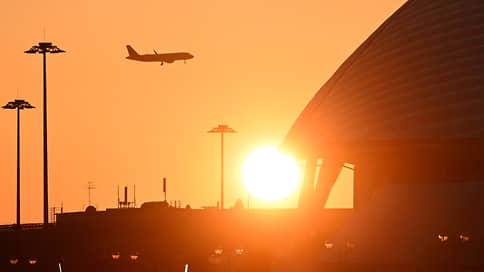Global aviation will make a profit for the first time in four years
[ad_1]

The global airline industry has recovered from the consequences of the pandemic and will turn profitable in 2023 for the first time since 2019, according to IATA estimates. Passenger traffic has almost reached pre-pandemic records and could exceed it in 2024, reaching 4.7 billion people. Russian airlines are recovering much more slowly: by the end of 2023, they should carry 20% fewer passengers than in the record year of 2019, which authorities expect to reach only by 2030. Experts consider both the global and Russian forecasts to be overly optimistic: in the Russian Federation this is unlikely due to the aging fleet and sanctions, and in Europe, from 2026, emissions taxes and inflation may slow down transportation.
The passenger traffic of global airlines in 2023 will be 95% of the pre-pandemic level in 2019 (4.5 billion passengers) and will surpass it in 2024, reaching 4.7 billion people. predicts IATA. Also, at the end of the year, the global air transportation sector, which suffered a total loss of $183 billion in 2020–2022, should reach a profit of $23.3 billion for the first time in four years. African and South American airlines will remain in the red. However, airlines’ net margins average just 2.7%, which IATA chief executive William Walsh said is “far below what investors in almost any other industry would accept.”
By 2040, IATA expects that global passenger traffic will almost double, increasing by 3.9 billion people.
In Russia, air travel is not expected to return to the record level of 2019 (128 million people) in the coming years. According to the base scenario of a comprehensive strategy for the development of the aviation industry, under the conditions of sanctions, passenger traffic is expected to grow by 1–3% per year, to 116.1 million people by 2030. At the same time, in 2022, passenger traffic fell to 95 million passengers, not reaching the planned 100 million. In 2023, as Rosaviation expects, passenger traffic will amount to 103 million people. In the fall, the head of the regulator, Dmitry Yadrov, said that in 2024, passenger transportation is expected to reach 104.5 million.
Theoretically, an average annual growth of 3% will allow passenger traffic in Russia to almost reach pre-pandemic levels by 2030, but Kommersant’s interlocutors in the expert community are skeptical about the reality of such a pace.
In addition to a large number of difficult-to-predict factors, they draw attention to the trend towards a reduction in government support and an increase in carriers’ maintenance costs.
Both the IATA forecast and the expectations of the aviation authorities in the Russian Federation seem overly optimistic, says Alexander Lanetsky, CEO of Friendly Avia Support. There are currently more risks of traffic slowdown than opportunities for its growth both in the Russian Federation and in the world. IATA in its forecast lists several types of risks that could slow traffic growth, including wars (in Israel and Ukraine), rising oil prices, interruptions in the supply of spare parts and delays in the delivery of new aircraft. But the effect of introducing a fee for CO2 emissions is underestimated, which will lead to a noticeable increase in tariffs in the EU starting from 2026, the expert believes. We are talking about the CORSIA program (Carbon Offsetting and Reduction Scheme for International Aviation). As part of this, the airline industry must limit its total emissions to 2019 levels. ICAO intends to make this fee mandatory from 2027. If the airline exceeds it, it must compensate for emissions by purchasing the corresponding amount of quotas from ICAO-approved CO2 absorption projects (the so-called offset). The funds will be used to invest in green energy, planting forests and pumping carbon into the soil. Airline costs could reach $1.5–6 billion per year by 2025, depending on the price of CO2 (see “Kommersant” dated August 30, 2021).
Taking into account record inflation in European countries, rising tariffs will seriously affect traffic, Mr. Lanetsky believes. Spending on travel over the past two years was largely due to demand deferred during Covid, he explains; in the future, the trend towards saving will increase.
In the Russian Federation, the key risk is associated with the obsolescence and retirement of the foreign fleet in the absence of guarantees of uninterrupted repairs of equipment, primarily engines. On substitution The fleet of domestic aircraft may take about a decade, the expert believes (the authorities expect new 1036 aircraft by 2030).
The limiting factor remains that 11 airports in the south of the Russian Federation remain closed: according to the expert, without them up to 10% of passenger traffic is lost.
A visa-free regime with China, which has not yet been approved, could provide an increase in passenger traffic of about 3%, or 3 million people. However, in reality the figure may be lower, adds Mr. Lanetsky, since a significant part of the traffic from China was transit passengers. The opening of new tourism markets could provide a chance to increase traffic, he says, but even if they appear, it will take up to five years to develop them.
[ad_2]
Source link





